25th anniversary of the Rodney King beating
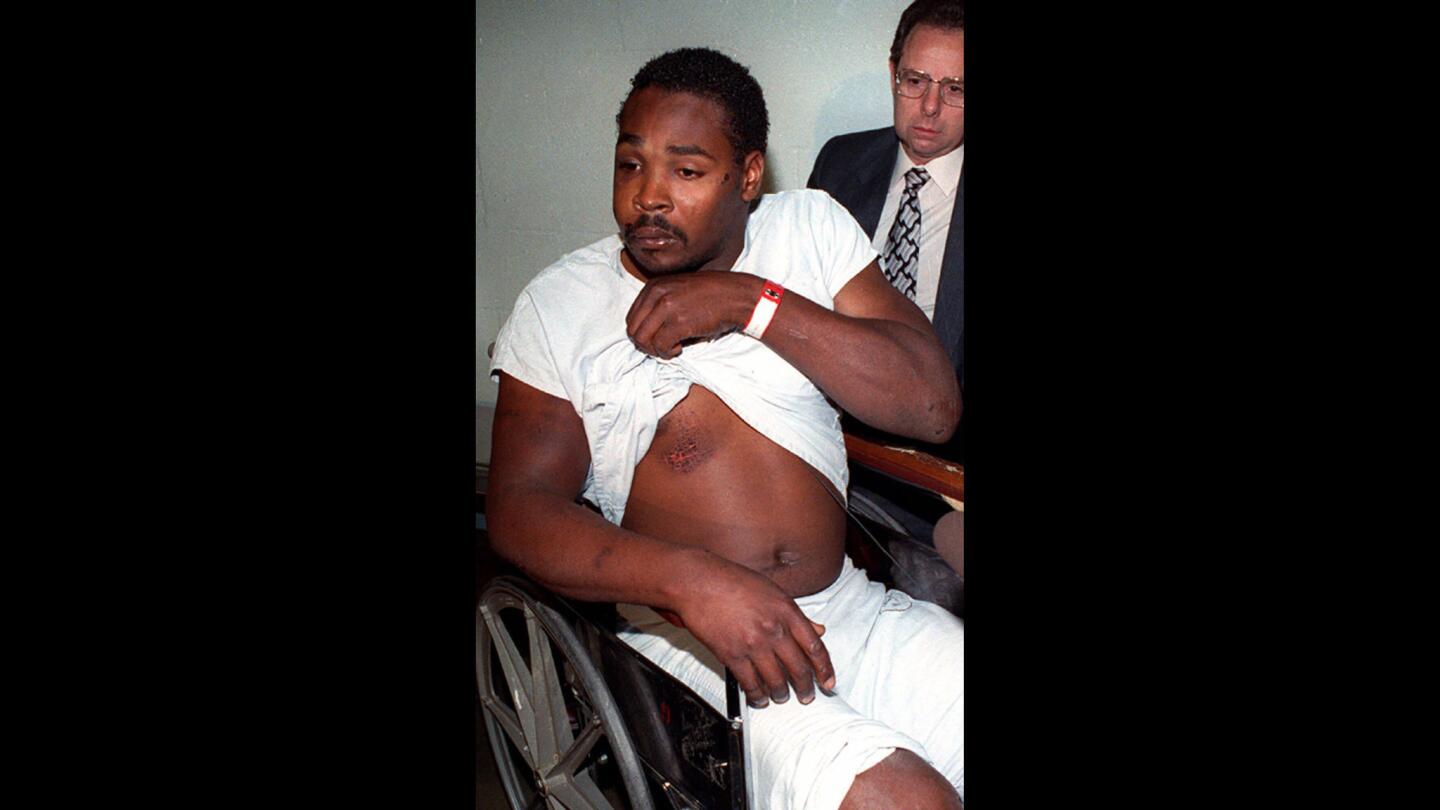
Rodney King shows the bruises he sustained at the hands of four Los Angeles police officers. A citizen with a video camera, George Holliday, had recorded from his balcony the prolonged beating of King by four white police officers.
(KEVORK DJANSEZIAN / Associated Press)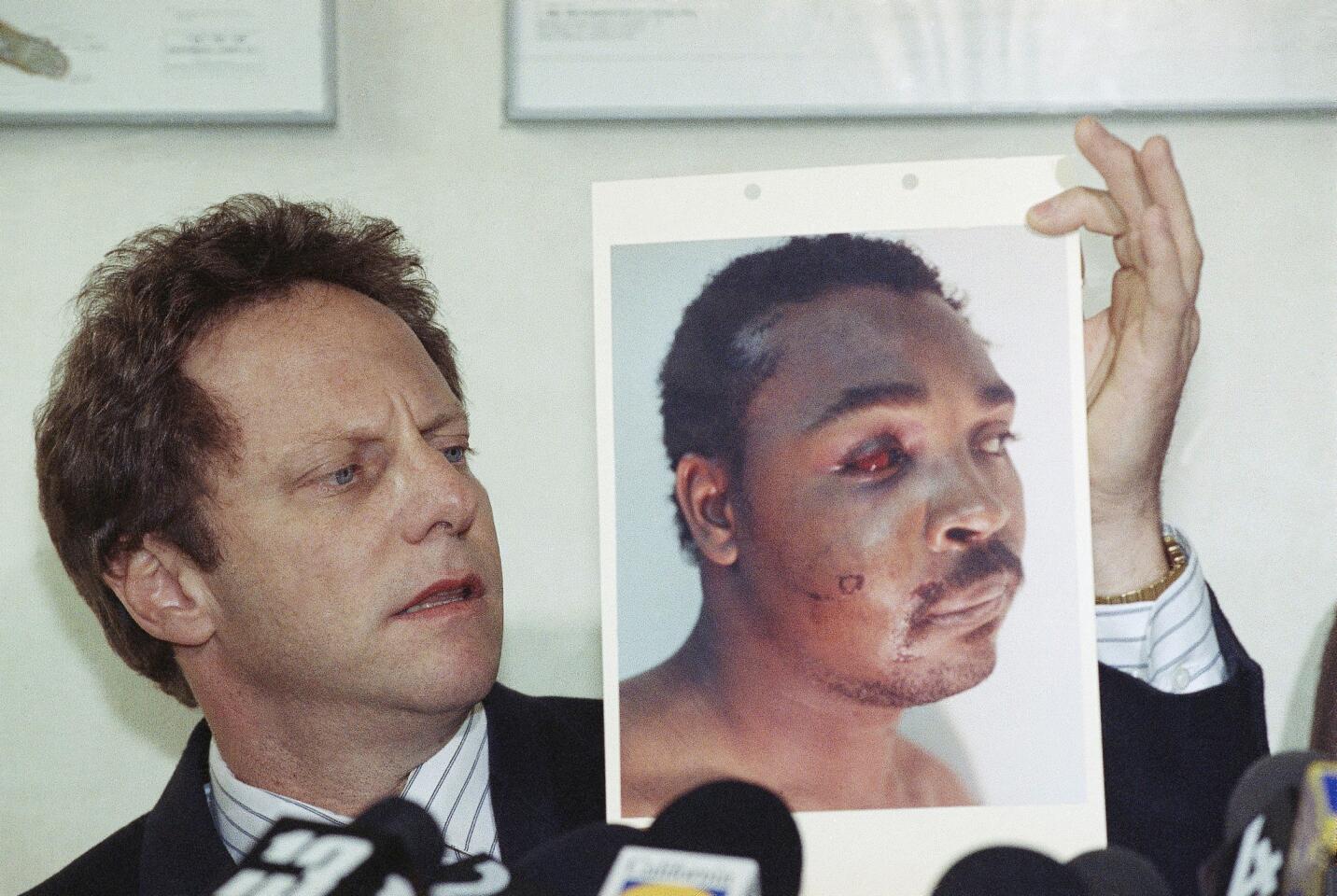
Steven Lerman, attorney for Rodney King, displays a photo of his client during a press conference at his office in Beverly Hills on March 8, 1991. King’s doctor outlined the extent of the man’s injuries for reporters during the meeting.
(Nick Ut / Associated Press)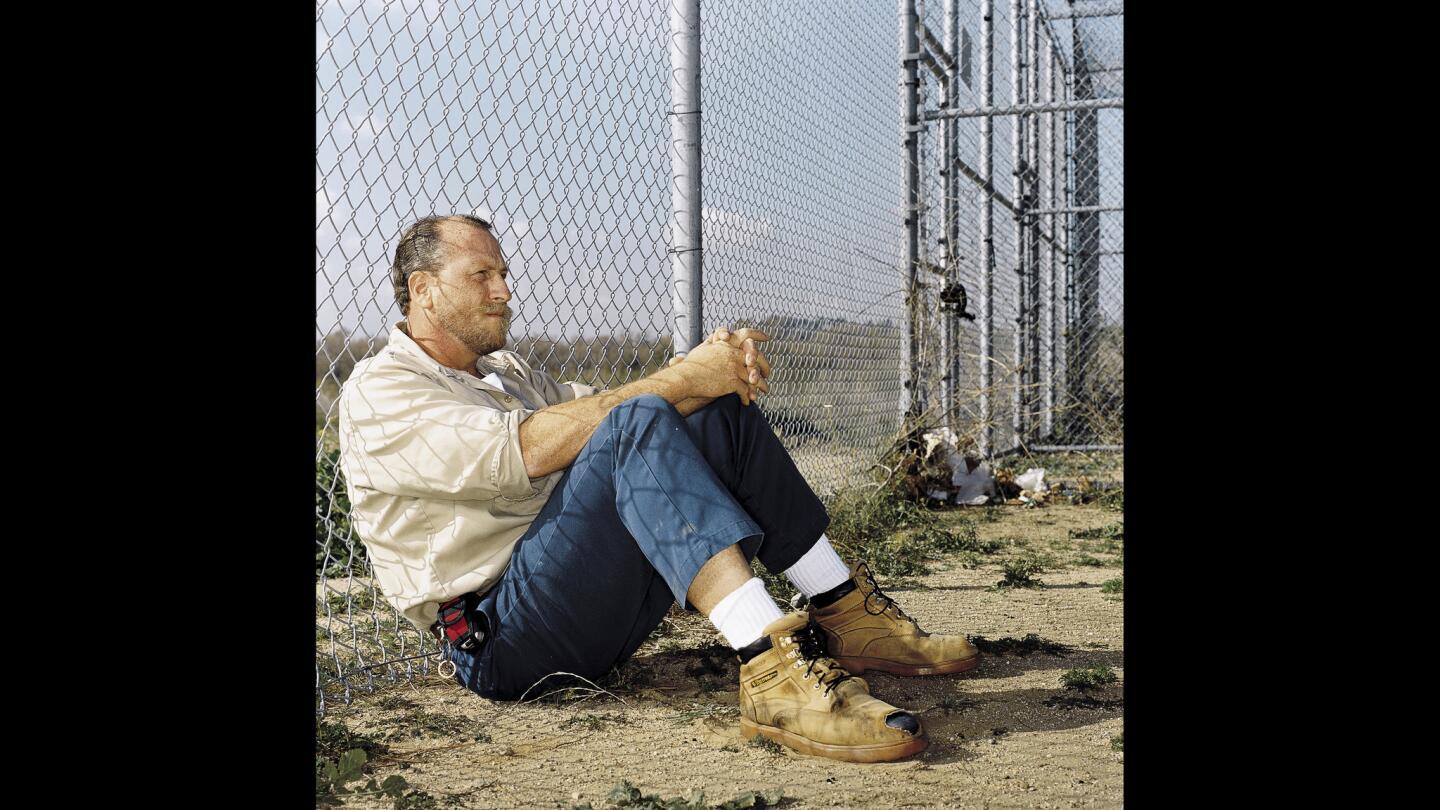
George Holliday, who captured the Rodney King beating on his video camera, in February 2006
(Michael Kelley / For the Times)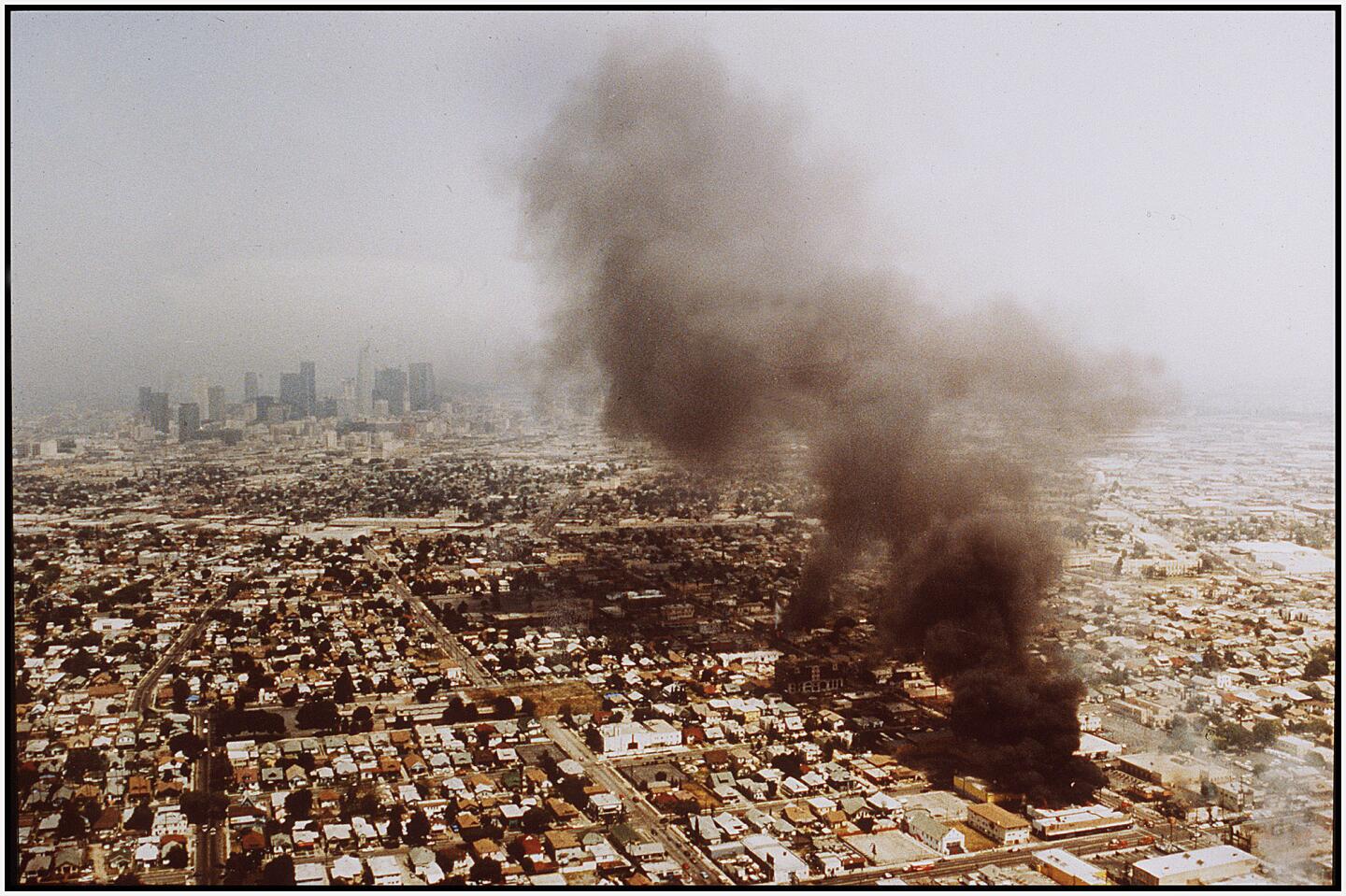
Fires burn out of control on the second day of rioting in Los Angeles following announcement of the Rodney King verdicts.
(Kirk Mckoy / Los Angeles Times)Advertisement
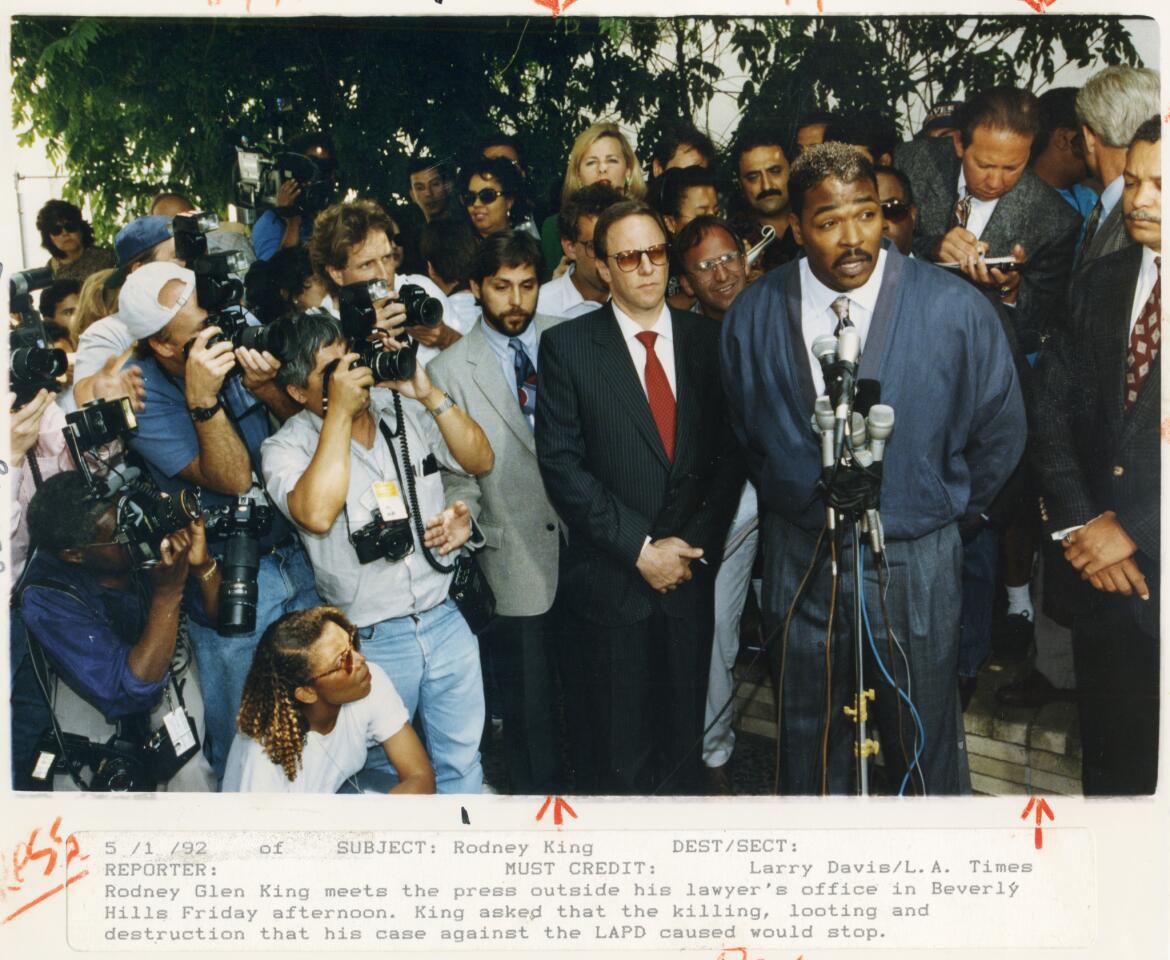
Rodney King asks the now-famous question, “Can we all get along?” in a press conference outside his lawyer’s office in Beverly Hills. King asked that the killing, looting and destruction spurred by his case would stop.
(Larry Davis / Los Angeles Times)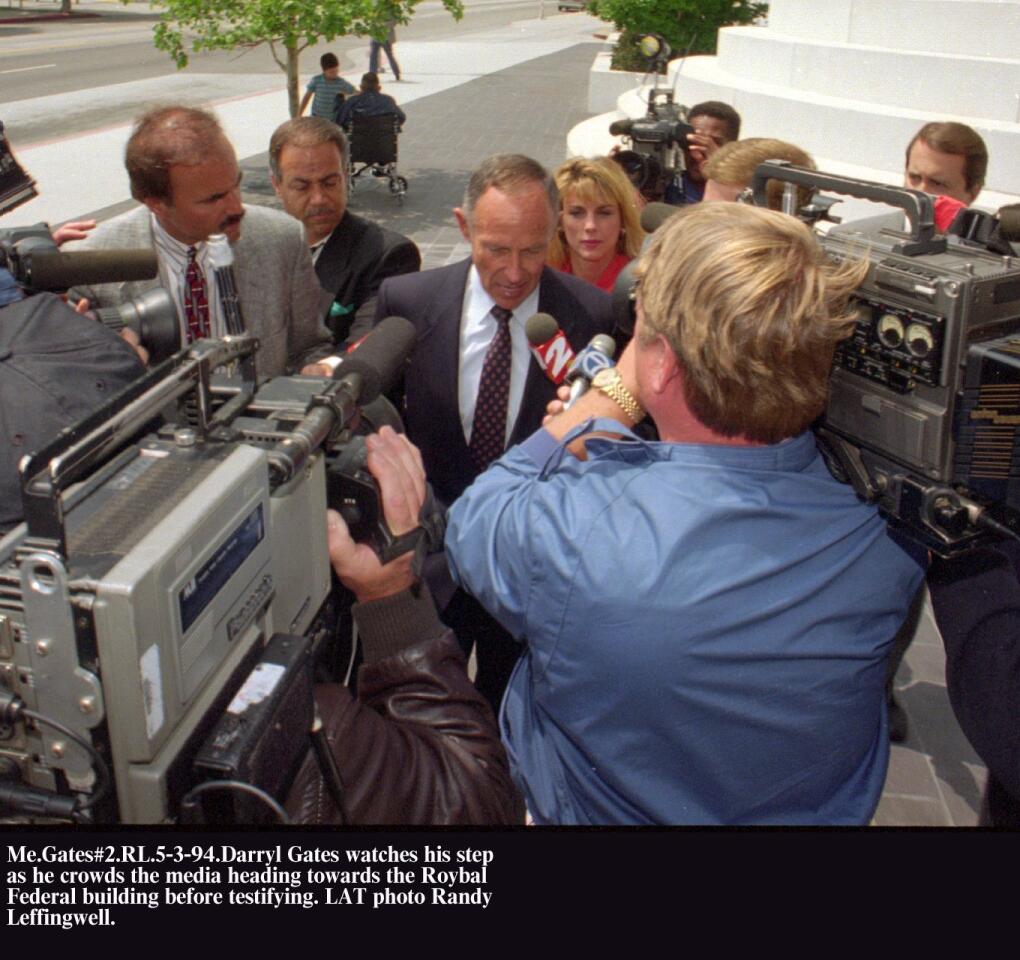
Darryl Gates, former LAPD chief, arrives at the Roybal Federal Building and is surrounded by news media. Gates was chief during the King beating and subsequent rioting.
(Leffingwell, Randy / Los Angeles Times)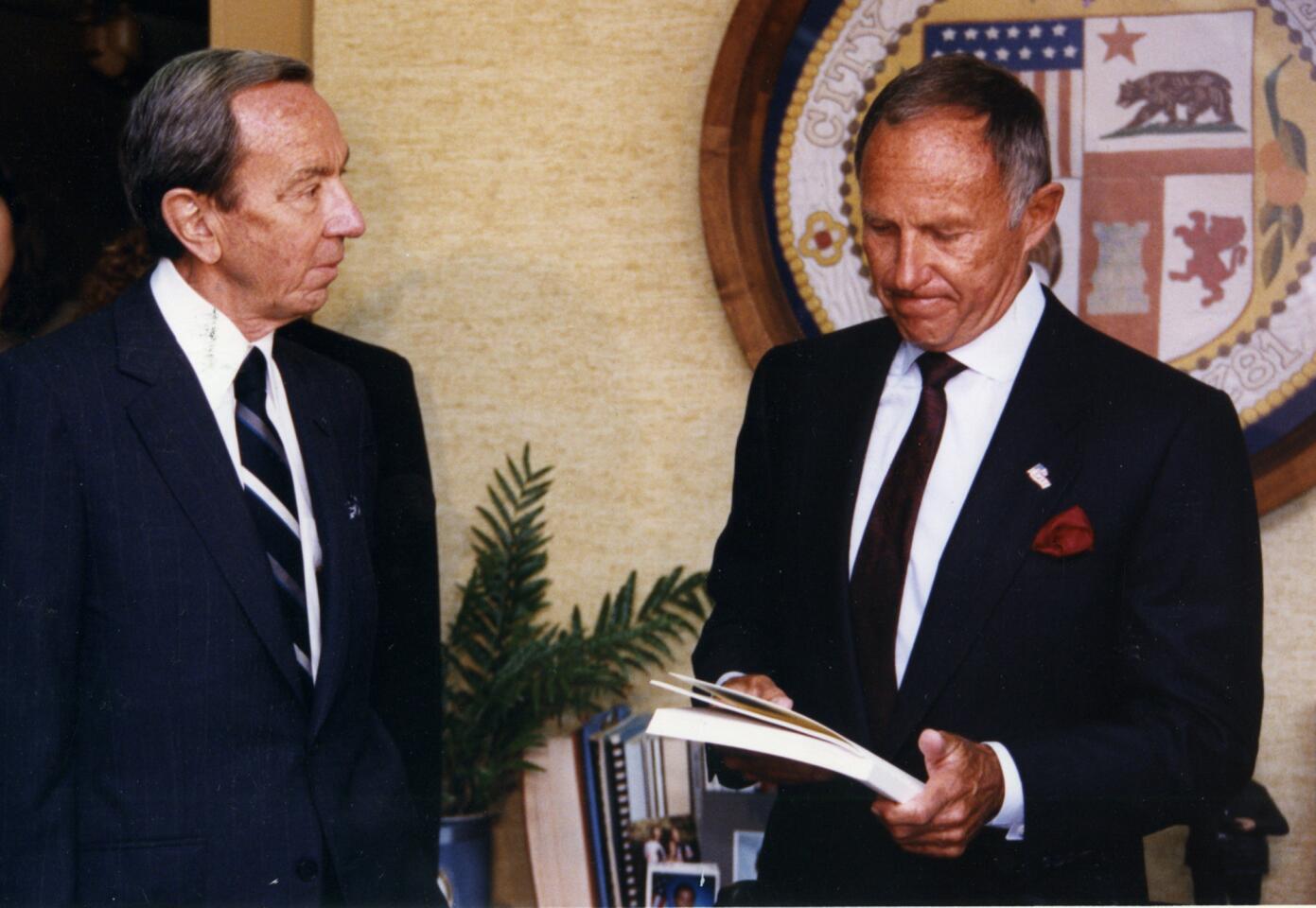
Warren Christopher hands a copy of the Christopher Commission report to Police Chief Daryl F. Gates in Gates’ office at Parker Center. The report examined the operation of the LAPD, especially its recruitment, hiring and training practices, internal disciplinary system and citizen complaint system in the wake of the King beating.
(Rick Meyer / Los Angeles Times)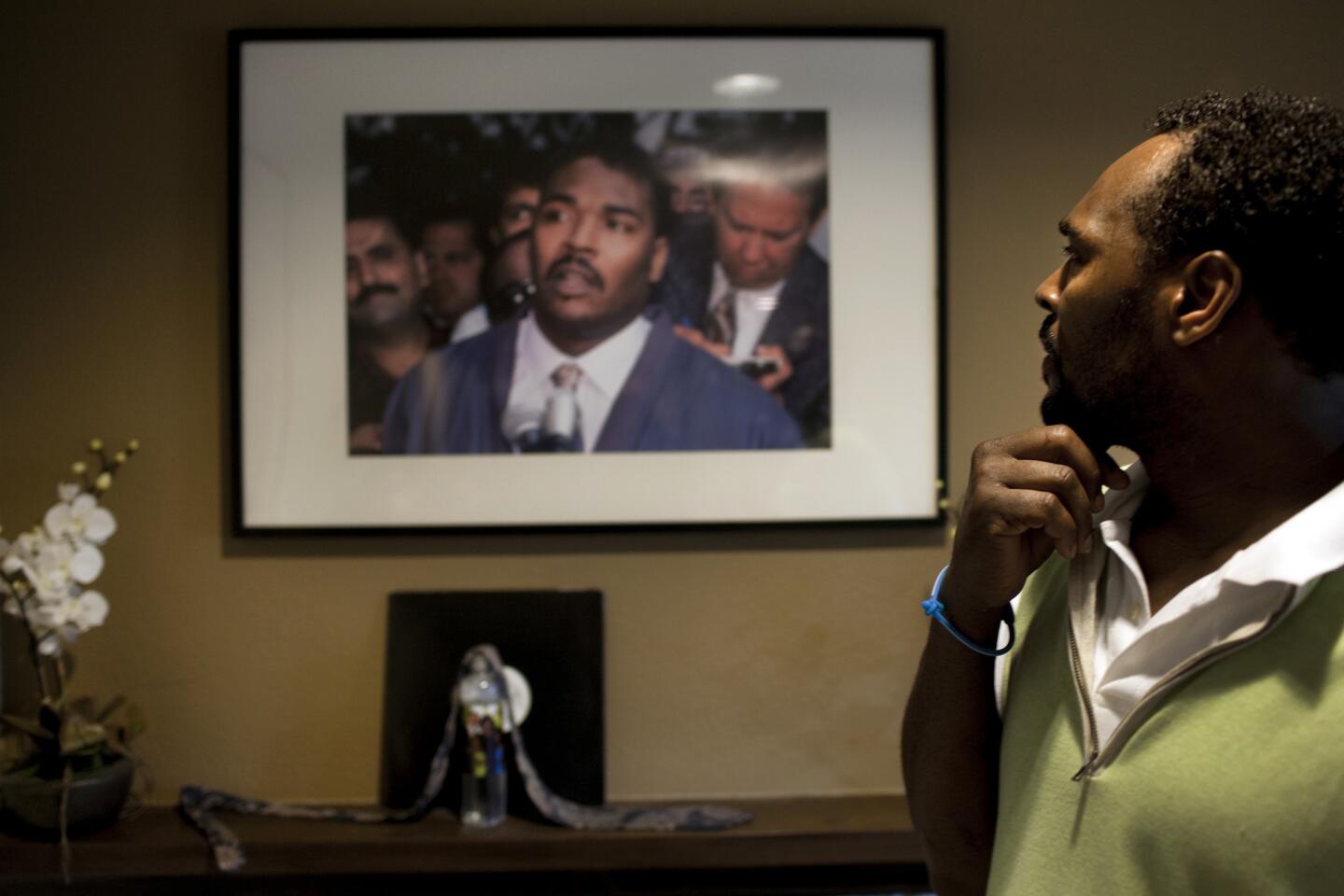
Rodney King looks at a picture of himself from May 1, 1992, the third day of the Los Angeles riots, which hangs in the living room of his home in Rialto, in 2012. At that press conference, King uttered the famous words, “Can we all get along?”
(Jay L. Clendenin / Los Angeles Times)Advertisement
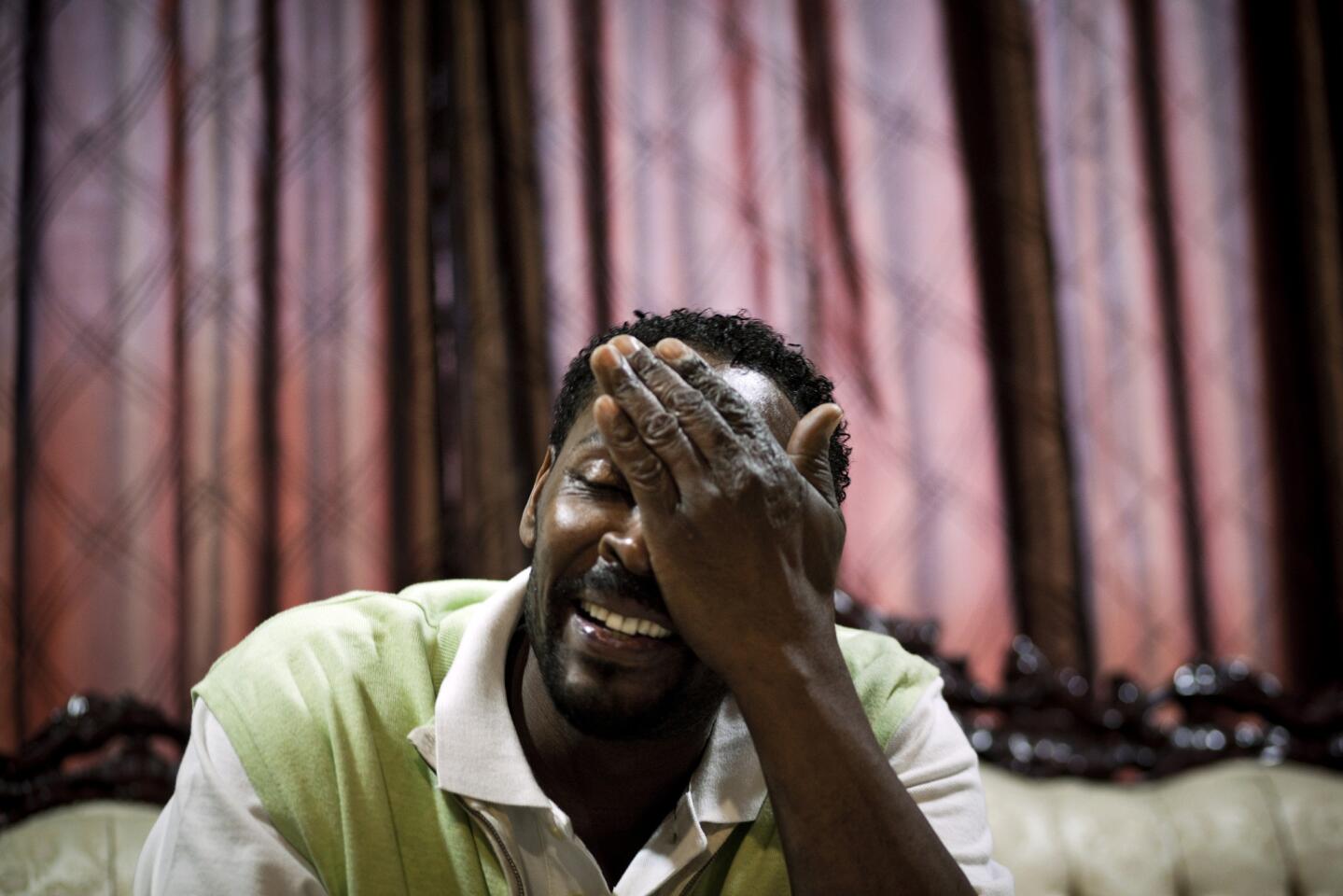
Rodney King at his home in Rialto in 2012. King, whose beating by police was caught on videotape and then sparked the L.A. riots when the accused police were acquitted, has a book coming out, timed with the 20th anniversary of the riots.
(Jay L. Clendenin / Los Angeles Times)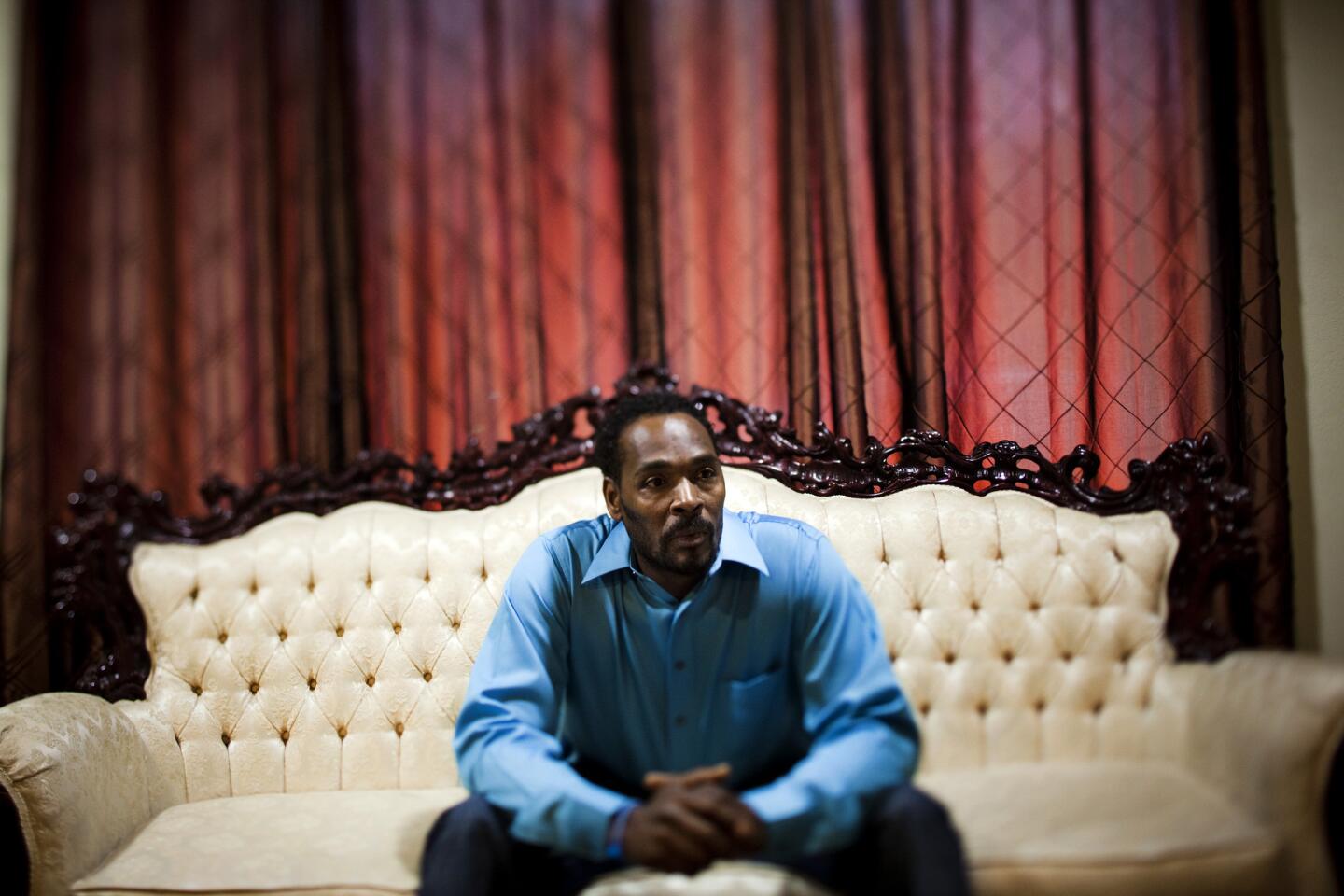
Rodney King at his home in Rialto in 2012.
(Jay L. Clendenin / Los Angeles Times)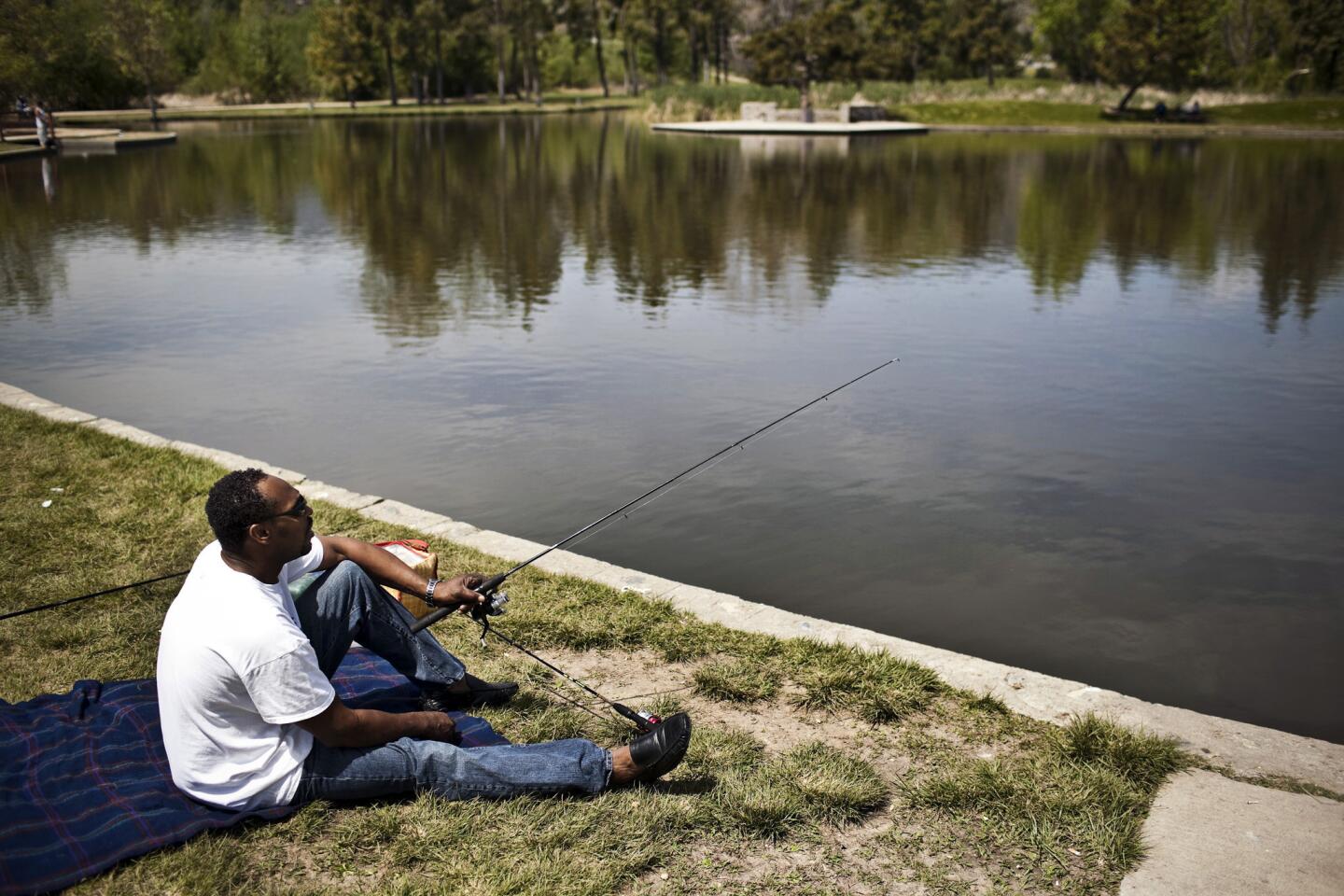
Rodney King during a day of fishing at Glen Helen Regional Park in San Bernardino in 2012.
(Jay L. Clendenin / Los Angeles Times)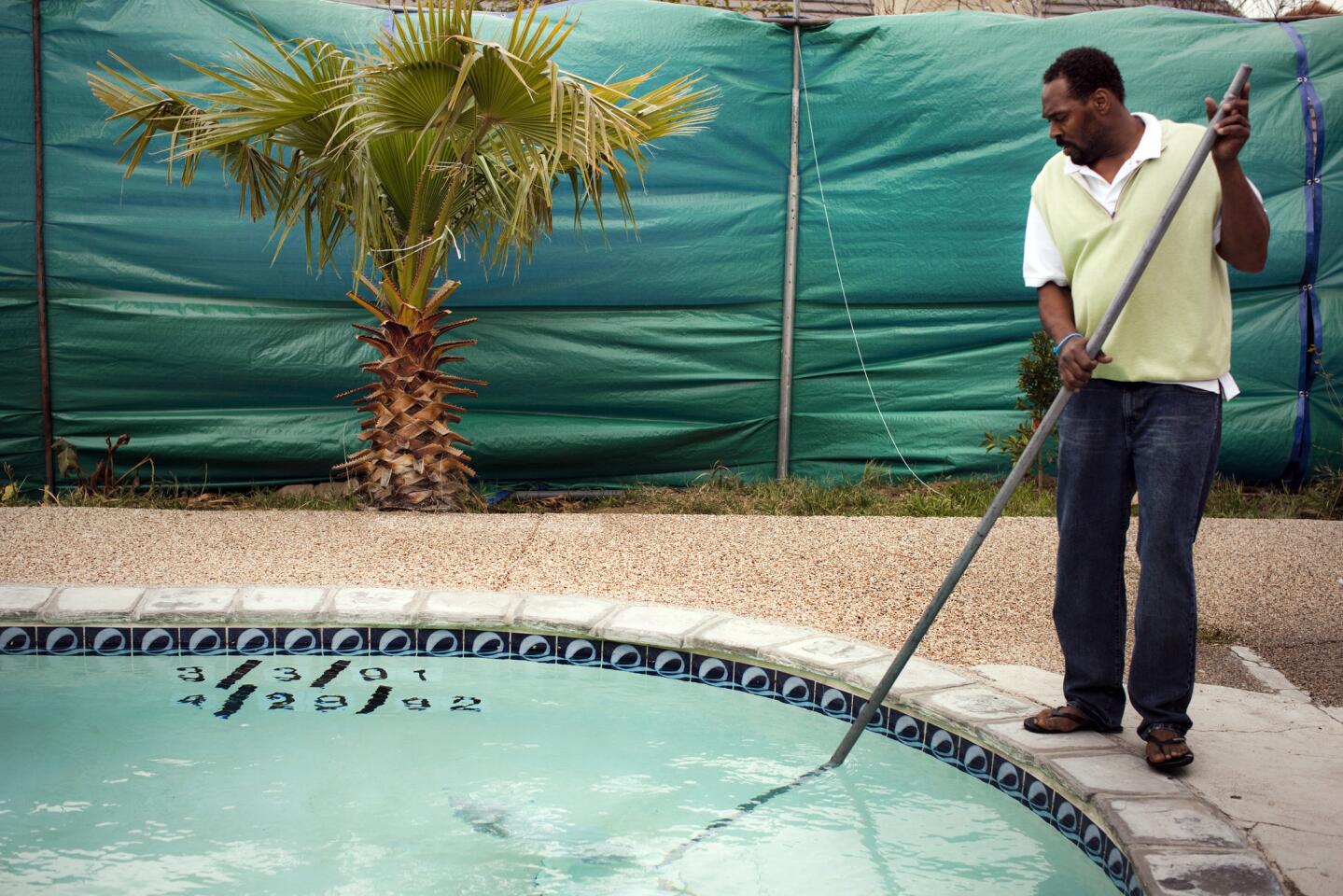
Rodney King at his home in Rialto in March 2012. King was found dead in the pool in June of that year.
(Jay L. Clendenin / Los Angeles Times)Advertisement
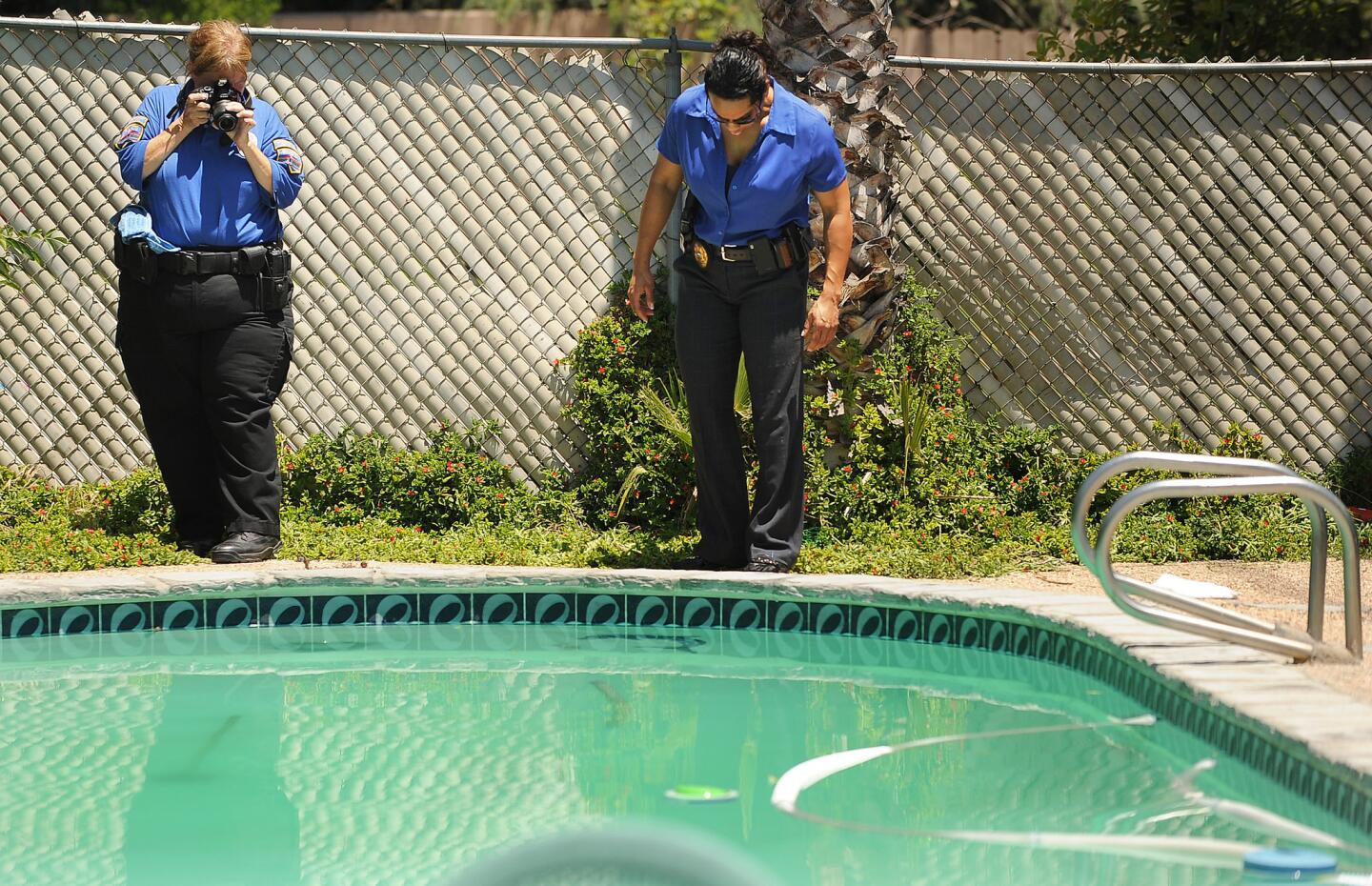
Investigators from the Rialto Police Department at the swimming pool where Rodney King was found dead.
(Wally Skalij / Los Angeles Times)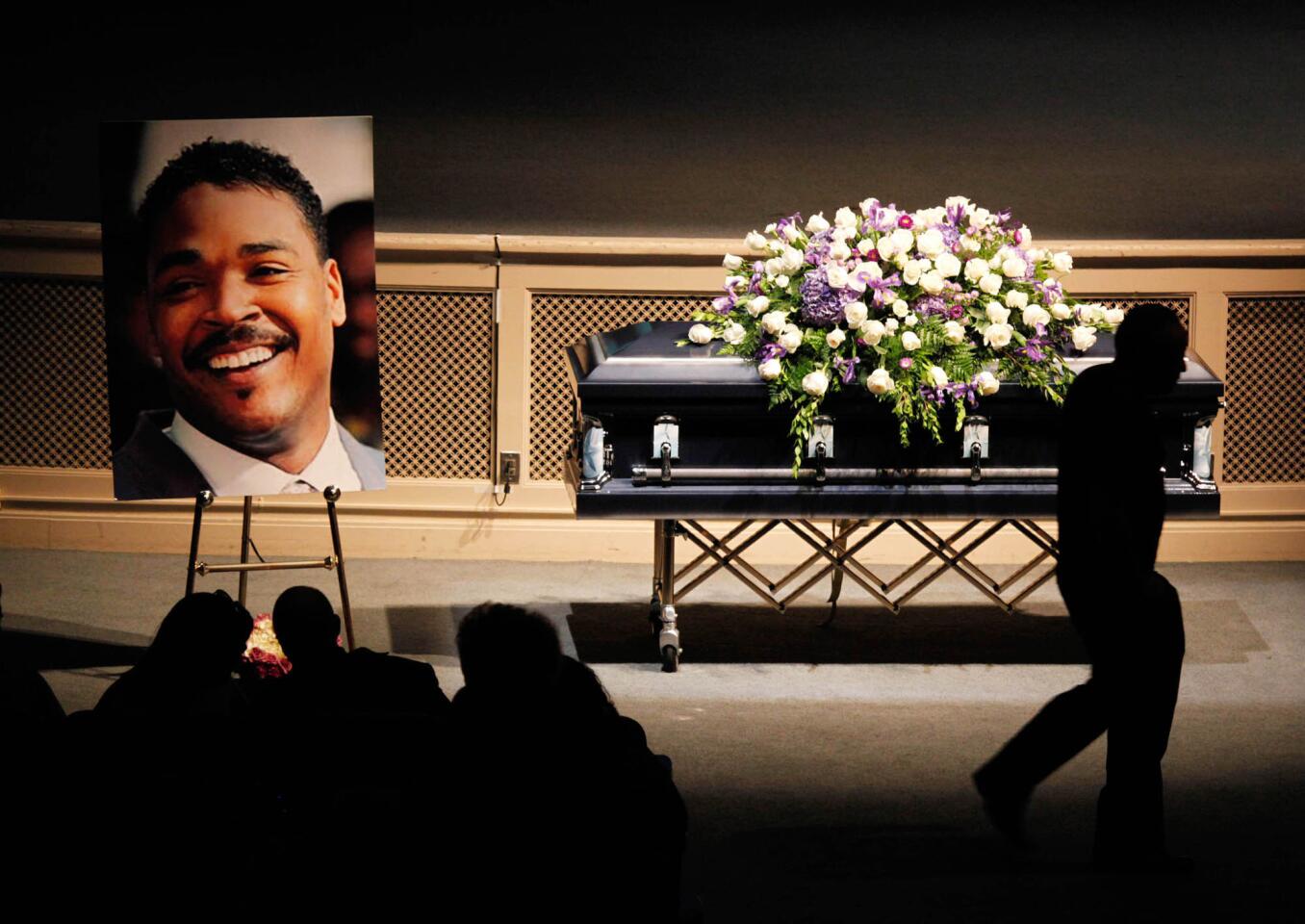
A memorial service for Rodney King, whose videotaped beating by Los Angeles police officers led to the worst urban riots in a generation and spawned widespread reforms, at Forest Lawn Hollywood Hills cemetery on June 30, 2012, some two weeks after he was found dead in his swimming pool.
(Barbara Davidson / Los Angeles Times)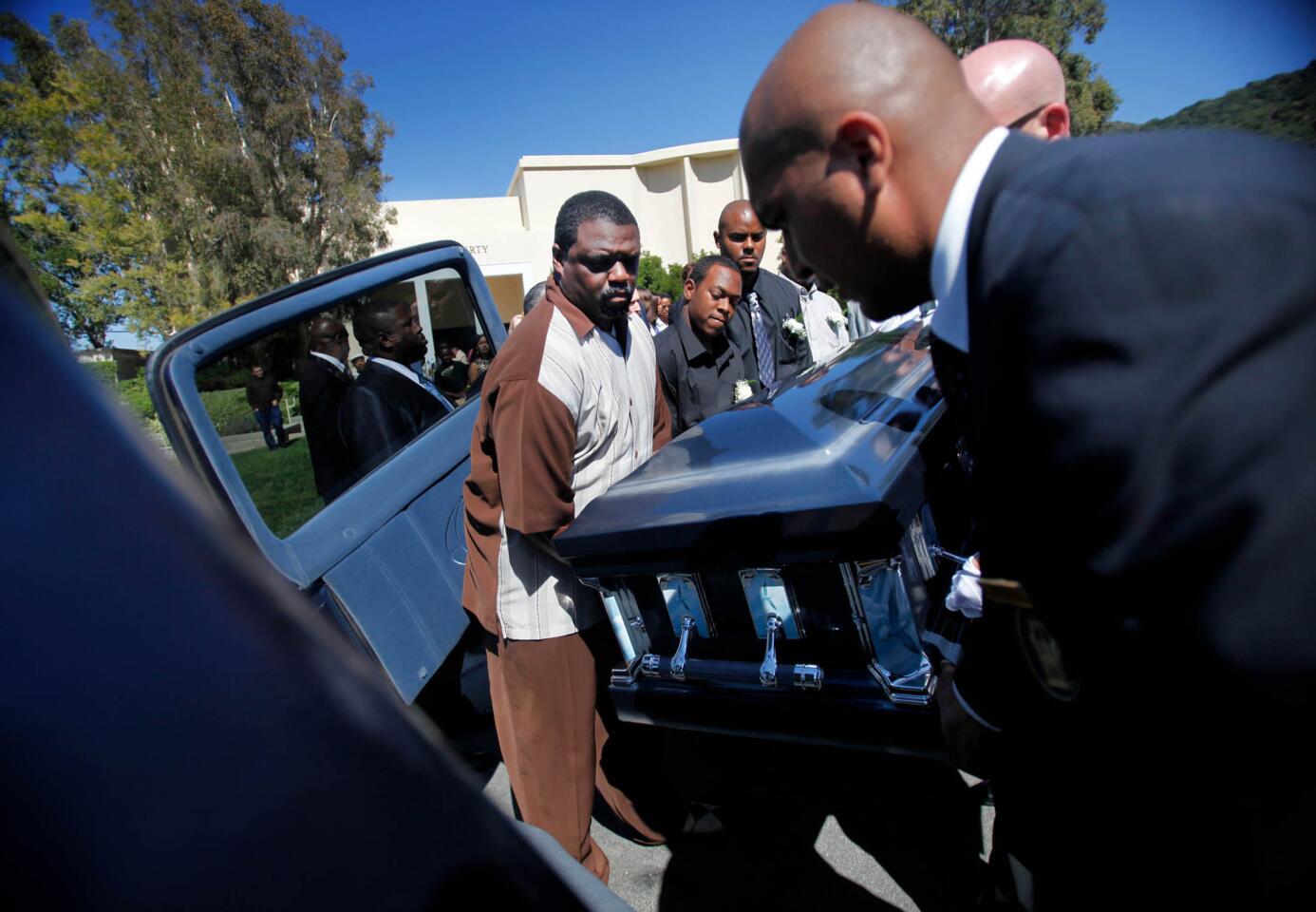
Rodney King’s coffin at Forest Lawn Hollywood Hills cemetery June 30, 2012, some two weeks after he died in his swimming pool.
(Barbara Davidson / Los Angeles Times)


